Suzuki’s Vitara is one of the most entertaining and likeable crossovers to come to market in recent years, with plenty of practicality and comfort mixed with surprisingly spry handling.
If there could be any complaints about the Vitara, however, it would be about the lack of variety in engine choices. Whereas previously buyers had been restricted to a slightly middling petrol and a big, brusque diesel, there’s now a sportier option in the brand-new Vitara S trim.
With an obviously much sportier disposition than the regular models, the Vitara S comes outfitted with a range of extra performance touches. These include 17-inch gloss black alloys, a bolder grille design and a rear upper spoiler, plus black side body mouldings.
It certainly looks the part, but it’s not all fur coat and no knickers. Under the bonnet lies a 1.4-litre turbo petrol engine, the first in the BOOSTERJET series that treads a similar path to Ford’s EcoBoost or Vauxhall’s ECOnetic units.
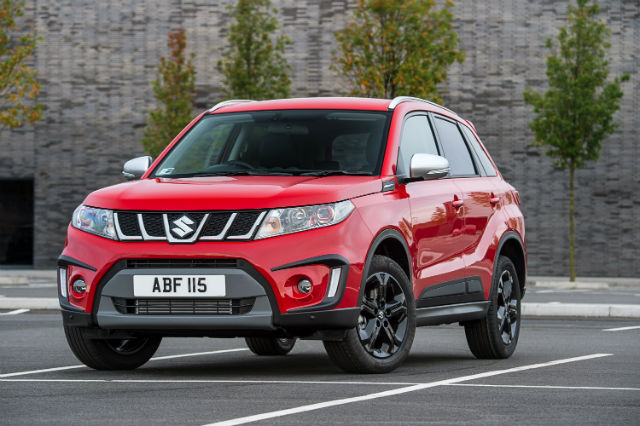
Maximum power clocks in at 138bhp, and with 220Nm of torque that kicks in immediately from 1,500rpm, the BOOSTERJET is really impressive at quickly scooting up to speed and covering ground quickly.
Eager and responsive, courtesy of a specially-developed turbo attached directly to the cylinder head, it’s remarkably keen when you push the accelerator into the carpet. It records a 0-62mph sprint time of 10.2 seconds and a maximum speed of 124mph.
No, it’s obviously not the fastest engine in the world, but it feels a lot quicker than it looks on paper. Furthermore, it’s one of those that you can have fun with and really wring the best out of it while you’re tootling along your average twisty B-road.
Compared with the larger petrol and diesel engines available in the rest of the Vitara range, it picks up much, much quicker and allows for infinitely more accessible performance. Overtaking, which requires a bit more calculation in the other models, is now a breeze, as is slingshotting yourself round the apex of a corner.
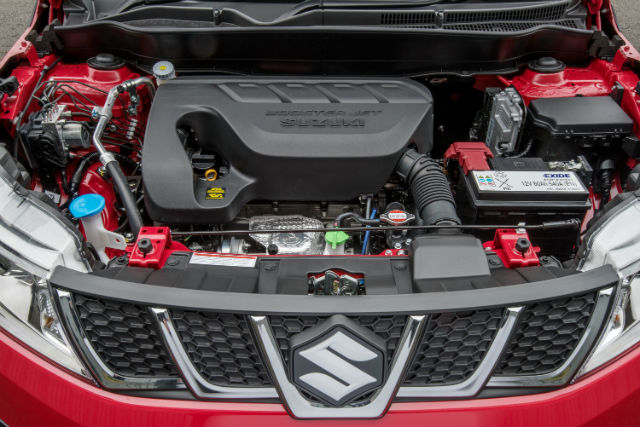
Fitted with automatic start-stop as standard, it’s also pretty frugal, and according to Suzuki’s official tests can return up to 52.3mpg on the combined cycle, with 127g/km of CO2 emissions.
Given its power, ease of use and emissions ratings, it almost makes the previously available engines feel obsolete, being much more sprightly than either of them and almost as fuel efficient as the diesel motor.
The Vitara S also comes fitted with an ALLGRIP all-wheel drive system and a six-speed manual gearbox as standard, while there’s also the option of a six-speed auto transmission as well. Having driven a fair few automatics recently, it’s easy to become a little tired with them and the common problem of the gearbox constantly second-guessing which gear it should be in.
However, this transmission is pleasingly happy. Shifts could be faster and there’s sometimes a noticeable delay before the gearing engages, particularly in manual mode, but they’re plenty smooth and, overall, one of the better automatics in its price range.
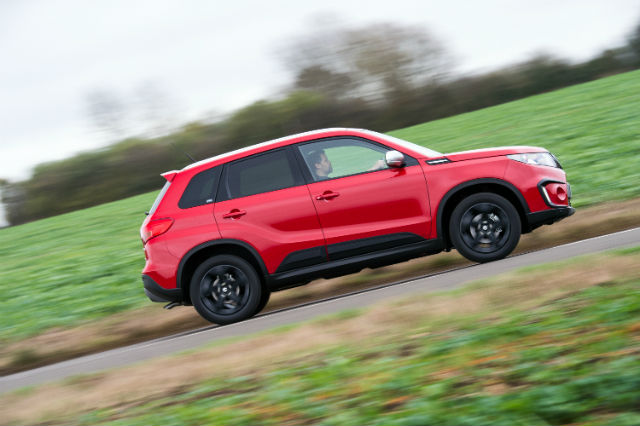
There’s not a whole heap of difference in terms of performance with the standard manual, with the only discrepancy being that it is, of course, manually operated. The shifter does feel well put together though, and not flimsy or cheap like some others, with a solid and well-weighted shift.
On the road, the Vitara is easily one of the best cars in its class in terms of sheer dynamics, and really only the Skoda Yeti can touch it in terms of nippiness and agility. Even in auto mode, where the front two wheels are the only ones providing power and the back engage when there’s a loss in traction, it’s remarkably poised on the road.
Impressively, the Vitara S suffers from very little body roll at all, and certainly none of the fudginess typically associated with cars of its type. A taut suspension setup keeps it from pitching too much in the corners, but still manages to remain comfortable over inconsistent road surfaces.
Twist the driving mode selection knob next to the gear lever to engage sport mode, and the throttle response instantly becomes even more immediate. In sport mode, the power bias is shifted more towards the rear wheels as well, which significantly increases handling and traction.
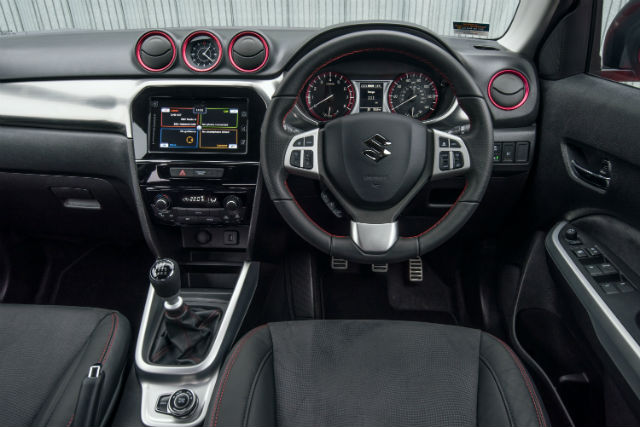
In standard auto mode it’s nippy enough, but sport mode sees the Vitara S dive into corners with surprising aplomb. The way it eliminates understeer and clings to the road would almost see many hot hatches blush.
Unfortunately, it does have its drawbacks, and the interior is where the Vitara S lets itself down a little. Yes, the infotainment system is nice to look at and straightforward to use, while the few controls are all likewise user-friendly and smartly laid out.
Even so, the interior still feels a little on the cheap side. The doors are a bit on the light side and the plastics are a little too scratchy. Also, the ‘performance red’ seat stitching and air vent surrounds in reality are more of a hot metallic pink, something which might put off a considerable amount of male buyers.
All the same, considering that pricing for the Vitara S starts from around £21,000, it’s to be expected that not everything is going to be perfect. If you’re looking for something with a luxury grade interior, you’ll be hard pressed to find it anywhere near this price range.
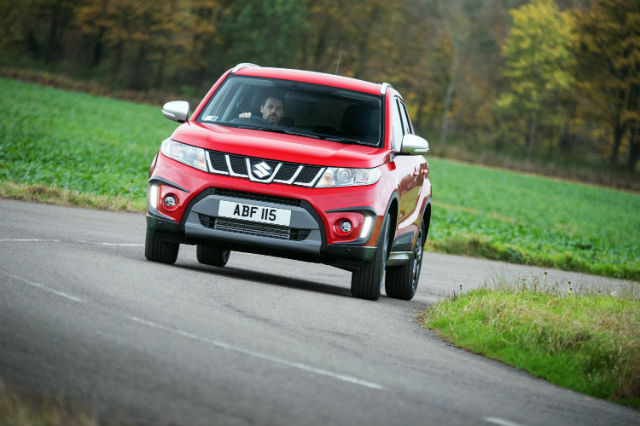
If you’re looking for a very likeable, easy to live with compact crossover that’s inexpensive, good-looking and entertaining on the road, then the Vitara S is a fine choice. In particular, the new 1.4-litre turbo addresses some of the biggest problems that the Vitara had; it’s just something of a shame that it’s not available on the lower trims.
Suzuki says that a smaller 1.0-litre BOOSTERJET is due to debut on the new Baleno supermini next spring, though, so it’s possible that the Vitara’s engine range could further expand in the near future.



